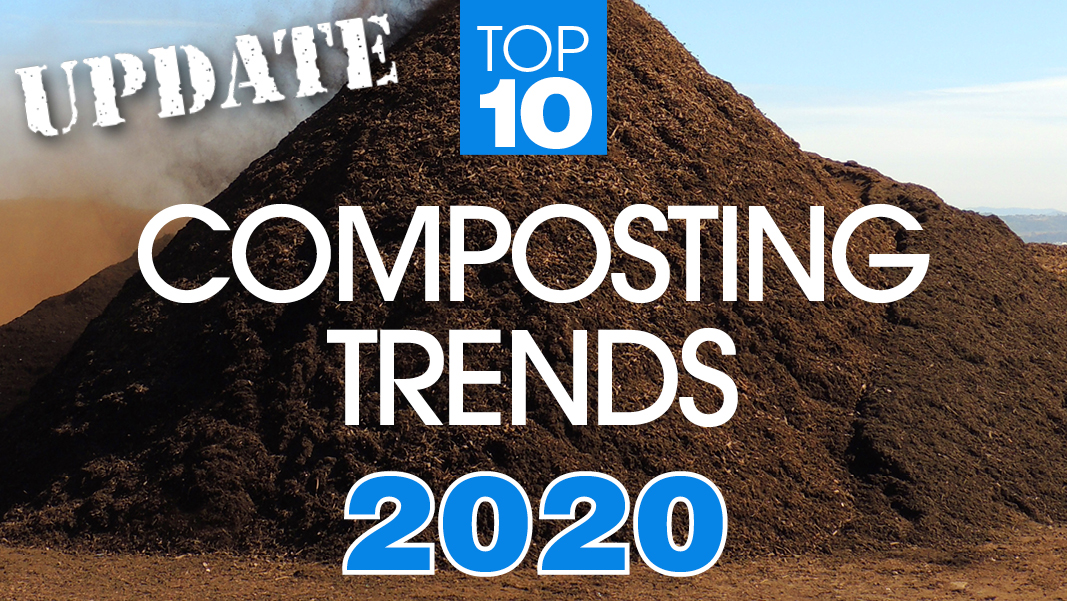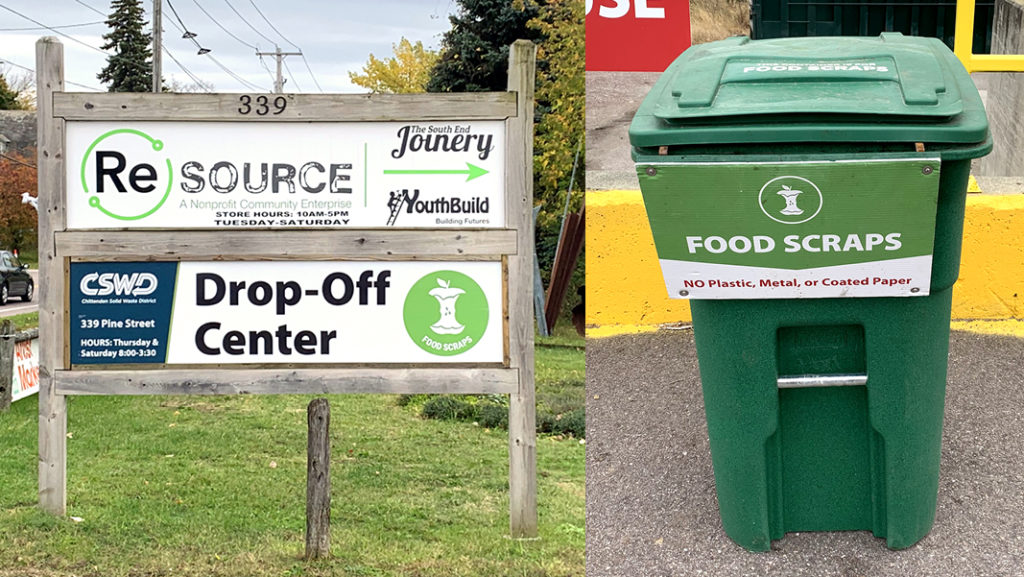Nora Goldstein
At the end of 2019, BioCycle editors contacted national and regional composting stakeholders to ask about the 2 most important trends that influenced the composting industry in their region, or nationwide, in 2019 — and if they see those trends continuing in 2020. We also asked about new trends they are tracking in 2020. The Top Ten trends were compiled and ranked.
As we near the end of 2020, it is timely to see if the trends identified in late 2019 are indeed unfolding as predicted. This is our take. We would very much like to know yours.
1. Organics out of the landfill mandates
The only state to adopt restrictions on landfill disposal of food waste in 2020 is New Jersey. In April, Gov. Phil Murphy signed a law that requires generators of more than 52 tons of food waste per year to separate and send it to the closest authorized recycling facility within 25 miles.
New York State, which passed a law in 2019 that restricts disposal of food waste, has been drafting regulations to implement the policy. California’s “official” regulations for implementation of SB 1383, which essentially accelerates diversion of organics from disposal and requires edible food recovery, are pending approval by the state’s Office of Administrative Law.
The last phase of Vermont’s Act 148 Universal Recycling Law went into effect on July 1, 2020, banning all food waste from disposal. In addition, this last phase required that waste haulers add food waste collection to their services, or make arrangements with another hauler to provide the service. The number of food scraps haulers in Vermont (pop. 624,000) is over 30, reports the Agency of Natural Resources. Food scraps drop-off sites have proliferated around the state.
To the best of our knowledge, we don’t anticipate other states passing organics disposal bans or restrictions in 2020, or in the first part of 2021.
2. Contamination — and dealing with it
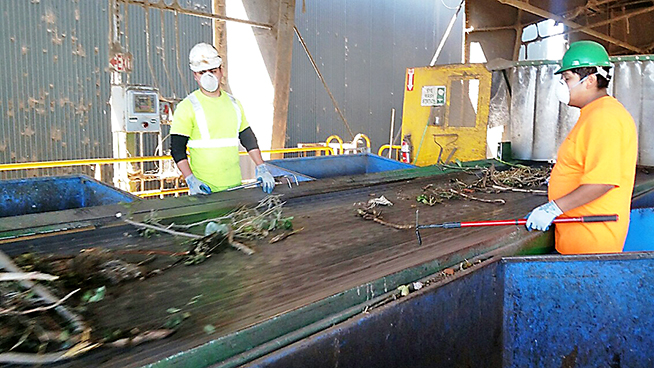
Residential organics sorting line at the City of Napa (CA) composting facility, operated by Napa Recycling & Waste Services (NWRS) . Photo courtesy of NRWS
Contamination hasn’t gone away, but composting facilities we’ve interviewed or read about in 2020 have made investments to capture as much of it on the front-end of their processes as possible. This includes sorting lines, sometimes with incoming organics shredded first to enable better access to contamination inside the certified compostable liner bags. Several have invested in depackaging systems. Others, especially composters that also have food waste collection services, opt for carts instead of 2- or 4-cubic yard dumpsters in order to visually look for contamination at the source before unloading the carts into their trucks.
While maybe not a full-blown trend, we increasingly hear about collection services that also are distributors for BPI-certified compostable bags and foodservice ware. The intent is to limit allowed compostable products to those known to disintegrate and biodegrade in the composting facility’s process.
Incorporating Depackaging Into Composting Operations
Solid Waste Company Equipped For Increased Organics
Food Waste Composting At North Carolina County Landfill
Innovation In Food Scraps Collection
3. Advances in compost market development, including government agency procurement
Compost sales skyrocketed in Spring 2020 due to a dramatic increase in the number of people sequestered at home during the height of the pandemic who were planting gardens and landscaping. Many composting facilities were sold out of product a month or two earlier than usual.
California’s SB 1383 regulations require jurisdictions to procure compost, mulch, and biogas from the state’s organics recycling facilities. The rule is scheduled to take effect in January 2022. Washington state passed a Compost Procurement and Use law in June 2020. The intent is to ensure that compost created from municipal recycling programs moves onto state, county and city projects. It also encourages cities with organics collection to enter into compost buy back agreements with their processors, closing the loop on their organics recycling programs.
Between consumer demand and procurement requirements, we expect markets to remain strong in 2021.
Washington State’s Compost Procurement Law
California’s SB 1383 Compost And Mulch Procurement Factsheets
4. Feedstock commitments, or the lack thereof
The 2020 Top Ten Trends article noted that investors and lenders demand them, food waste generators don’t want to commit, and in some places, there is outright competition for feedstocks. This is definitely still the case in October 2020, and likely not going to change. We are seeing organics recyclers equip their operations to take food waste “as is” from generators, which means with contamination, in packaging, etc, and then depackage and decontaminate it before putting it into anaerobic digesters or composting systems. The ability to offer this service is attractive to some food waste generators.
5. Compostable foodservice products
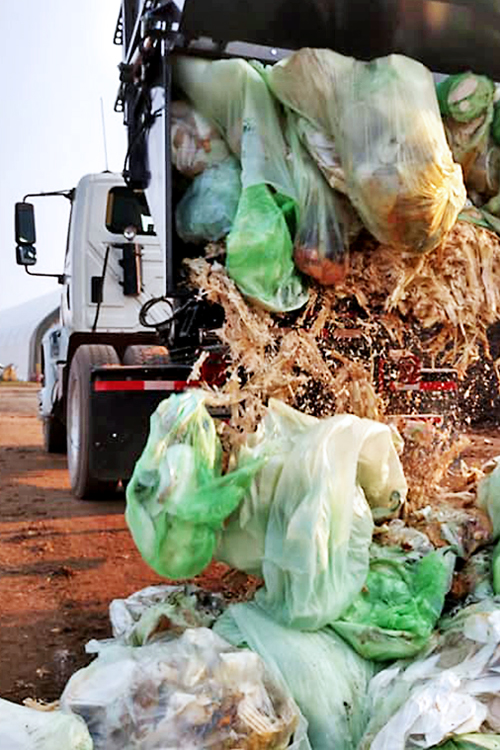
Food waste, collected by Better Earth Logistics (Peoria, IL) in BPI certified compostable Natur-Bag liners, is unloaded at Better Earth Compost. Photo courtesy of Better Earth Logistics
No grass growing under the compostable foodservice products discussion and activities in 2020. For example, the new U.S. Plastics Pact, a collaboration organized by the Ellen MacArthur Foundation, The Recycling Partnership, and the World Wildlife Fund (WWF), was launched in August with the vision “to ensure plastics never become waste by eliminating the plastics we don’t need, innovating to ensure the plastics we do need are reusable, recyclable, or compostable, and circulating all the plastic items we use to keep them in the economy and out of the environment,” according to the announcement. Over 850 organizations had already committed to work collectively toward “scalable solutions” when the Pact was announced. The U.S. Plastics Pact complements existing global commitments that many consumer brands and food manufacturers have signed onto to make 100% of their plastic packaging reusable, recyclable, or compostable within the next 10 years.
Several weeks ago, the Biodegradable Plastics Institute (BPI), North America’s leading certifier of compostable products and packaging, released a first-of-its-kind set of labeling and identification guidelines designed to support organics diversion and reduce contamination for composters. The 26-page Guidelines for the Labeling and Identification of Compostable Products and Packaging features category and material-specific recommendations to make it easier for consumers and composters — as well as the food establishments utilizing the products — to distinguish between compostable and noncompostable items.
Research on certified compostable packaging, including liner bags, continues to show these products disintegrate within typical composting facility practices. Several detailed studies have been featured in BioCycle CONNECT.
Fate Of Compostable Products During Industrial Composting Of SSO
Compostable Product Disintegration Rate
Compostable Bags Don’t Impact Compost Quality
6. Reducing wasted food
This continues to be a huge priority, with the current focus on getting edible food to the growing number of food insecure families as a result of the pandemic. A lot of focus is on programs and initiatives in California because of inclusion of the 20% edible food recovery requirement in the SB 1383 law. CalRecycle recently released its model edible food recovery agreement that has 7 sections covering: Allowable Foods (acceptable and/or preferred for food recovery, foods not accepted for donation or collection and conditions for refusal); Food Safety Requirements and Protocols; Transportation and Storage (methods of transport, missed or delayed pick-ups, donation dumping); Equipment Protocols; Documentation and Recordkeeping; Commercial Edible Food Generator Service Fees or Financial Contributions; and Terms and Conditions.
7. Growth in residential food scraps collection and drop-off
In short, we are astounded at the number of food scraps drop-off sites popping up around the country, as well as the number of new companies offering subscription-based curbside collection service (sometimes combined with a drop-off option). My weekly Google Alert compilations seem to include at least one, and often more articles in the media on both drop-off and collection program start-ups. Drop-off locations are being opened by local agencies, private companies and nonprofits. Finally, for many of the private and nonprofit programs, collected organics are taken to community gardens and local farms for composting.
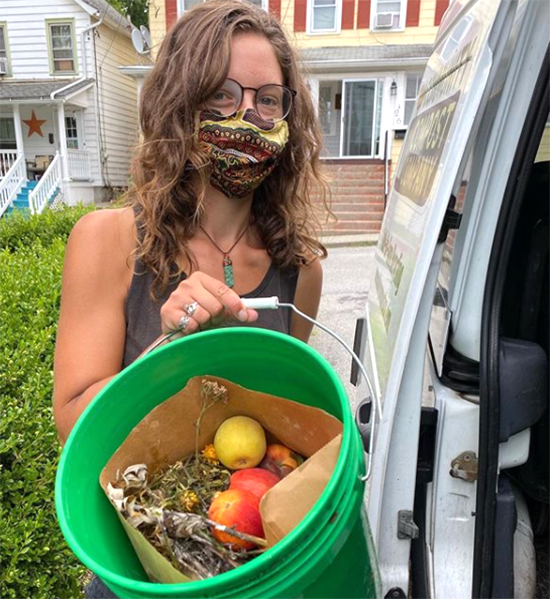
Community Compost Co.’s curbside food scraps collection service is offered to households on a subscription basis. Photo courtesy of Community Compost Co.
In BioCycle’s 2017 report, “Residential Food Waste Collection Access In The U.S.,” we identified 67 drop-off programs in 15 states — five of which had no curbside programs at the time. These drop-off programs serve 318 communities. I’m going to go out on a limb and say that when we conduct the Residential Food Waste Collection Access survey again in early 2021, the number of states will likely have doubled and the number of programs is well beyond 1,000. We also continue to see an increase in the number of municipalities allowing the addition of food scraps to household yard trimmings collection containers.
8. Multiple scales of composting
Without a doubt, as just noted in #7, the number of small-scale community composting sites continues to grow. We also continue to see, albeit in much smaller numbers, municipalities adding food waste to their existing composting facilities. In some cases, these municipalities have contracted out their composting facility management to private companies, some of which also have collection services.
9. PFAS
Poly-fluorinated compounds became the most recent plague for composters and other organics recyclers in 2018 and 2019. States continue to wrestle with how to regulate these. Finger pointing at certified compostable packaging as a source has faded with full-scale implementation of BPI’s initiative to only certify compostable products and resins that are free of intentionally added fluorinated chemicals like PFAS. On Dec. 31, 2019, BPI delisted about 2,000 products from its catalog that do not comply with that requirement.
10. State composting regulation revisions
Several states — Michigan and Colorado — were on track to update their composting regulations in 2020, reports Linda Norris Waldt, Advocacy and Chapter Relations Manager at the US Composting Council. However, closures due to the pandemic have delayed the process. North Carolina updated its composting regulations in November 2019.


